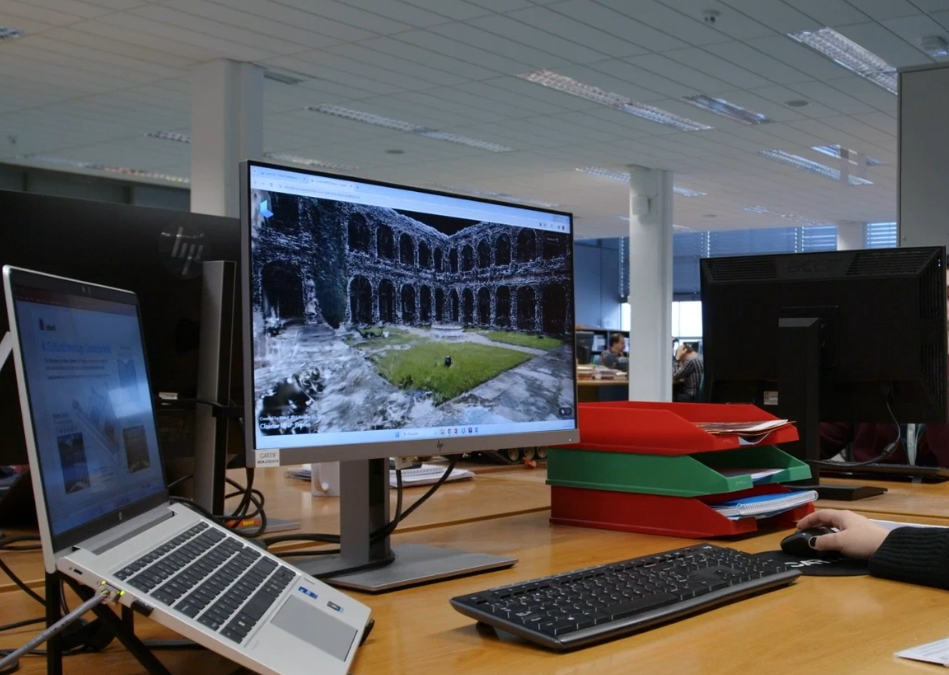The European Collaborative Cloud for Cultural Heritage (ECCCH), created in 2023 and aimed to create innovative tools for digitizing cultural heritage objects, is a trending topic in the UE applied research to ensure the sustainable and affordable conservation of our historical legacy.
For sure digitising cultural heritage involves a wide variety of technologies and techniques, some of which serve to analyse visible issues (those what we ‘detect’ with our eyes), and others serve to discover and analyse invisible issues (those what we are not able to see). Have you ever wondered what those techniques are? Keep reading as we begin in this episode with the visible ones. Don’t be impatient, next time we will explain those used for the invisible.
Digitising the visible characteristics of cultural heritage objects requires at least this range of innovative tools and methods:
- High res-3D scanning: to capture the shape, texture and geometry. Techniques such as laser scanning, structured light scanning, Structure from motion (SfM – by means of image sequences) or Neural Radiance Fields (NERF – adding IA to image sequences) are employed to create detailed 3D.
- Advanced imaging methods: this can include techniques such as multispectral images (normally between 3 and 20 spectral bands not necessarily contiguous to each other); hyperspectral images (formed by a greater number of bands but always contiguous); or reflectance transformation imaging (RTI), which easily reveal details, enhance colour accuracy, and provide material analysis.
- Virtual Reality (VR) and Augmented Reality (AR): to enable immersive experiences and interactive visualisation of cultural heritage objects. They allow users to explore digitised objects in virtual environments, providing a more engaging and educational experience.
- Metadata and semantic annotation: to ensure proper organisation and retrieval of digitised cultural heritage objects. These tools enable the description, classification, and linking of objects to related information, such as historical context, artist information, or cultural significance.
- Robust data storage and management solutions: As the volume of digitised cultural heritage objects is hugely growing, cloud-based platforms and digital repositories are required to provide scalable and secure storage for the vast amount of data generated through digitisation efforts.
- Collaborative Platforms: to ease collaboration among multiple institutions and experts, facilitate sharing, exchange, and collaboration among stakeholders, enabling seamless access to digitised cultural heritage data.
We know how to do all these things at CARTIF. Do you dare to ask us?
- Artificial Intelligence and Cultural Heritage: A Promising Alliance (With Nuances) - 7 November 2025
- The black gold of Castilla y León: its Cultural Heritage - 5 December 2024
- Talking about everything visible and invisible (II) - 30 August 2024
